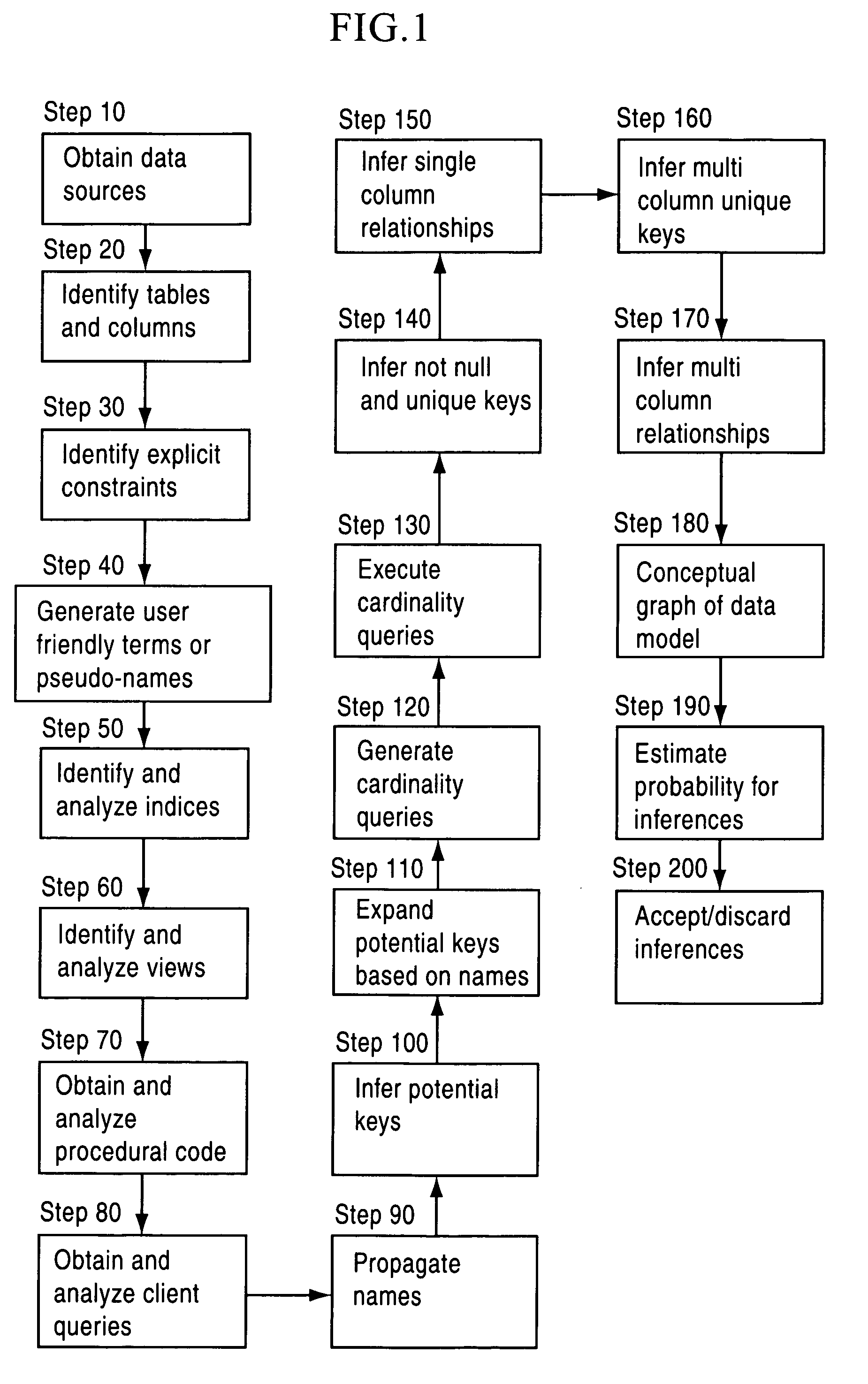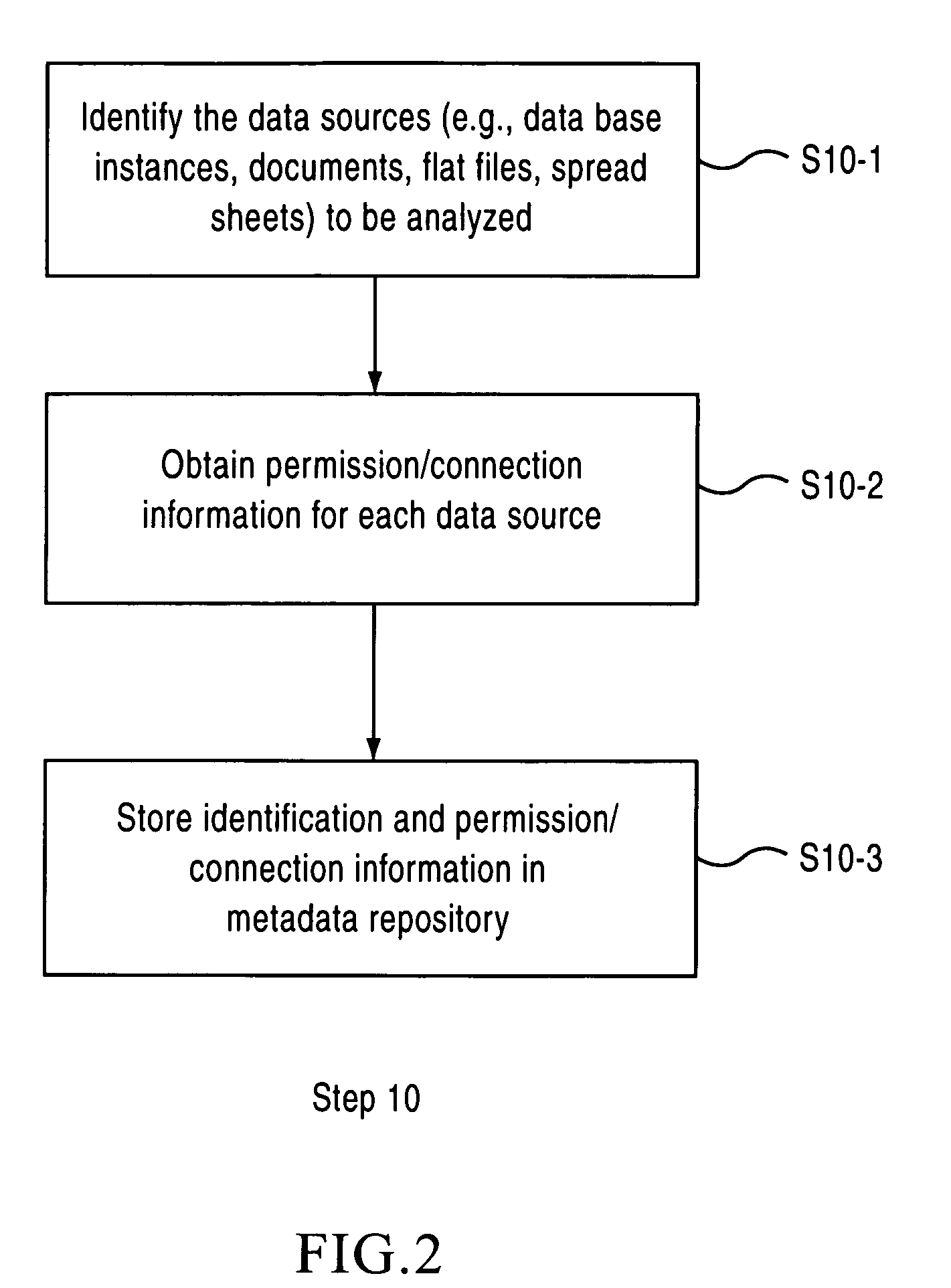System and method for analyzing data sources to generate metadata
a data source and metadata technology, applied in the field of systems and methods for generating metadata, can solve the problems of inability of primary users of such bi tools to access data directly, inability to understand the sql language, and inability to understand the data model
- Summary
- Abstract
- Description
- Claims
- Application Information
AI Technical Summary
Benefits of technology
Problems solved by technology
Method used
Image
Examples
Embodiment Construction
[0048]While the present invention may be embodied in many different forms, a number of illustrative embodiments are described herein with the understanding that the present disclosure is to be considered as providing examples of the principles of the invention and such examples are not intended to limit the invention to the embodiments described and / or illustrated herein.
[0049]Referring to FIG. 1, a method for analyzing data sources to generate metadata for the data sources according to an embodiment of the present invention will be described. Exemplary sub-flows are illustrated for each of the steps of the method in FIGS. 2-20.
[0050]According to embodiments of the invention, some or all of the following steps can be automated programmatically and some or all of the results of each step can be stored in a metadata repository. One skilled in the art will recognize that the execution of some steps results in the generation of metadata while the execution of other steps results in data...
PUM
 Login to View More
Login to View More Abstract
Description
Claims
Application Information
 Login to View More
Login to View More - R&D
- Intellectual Property
- Life Sciences
- Materials
- Tech Scout
- Unparalleled Data Quality
- Higher Quality Content
- 60% Fewer Hallucinations
Browse by: Latest US Patents, China's latest patents, Technical Efficacy Thesaurus, Application Domain, Technology Topic, Popular Technical Reports.
© 2025 PatSnap. All rights reserved.Legal|Privacy policy|Modern Slavery Act Transparency Statement|Sitemap|About US| Contact US: help@patsnap.com



